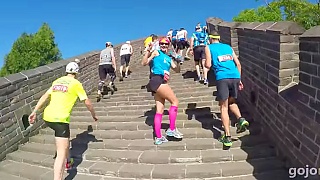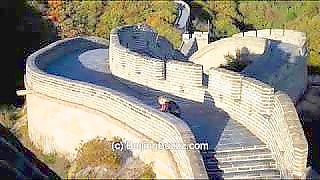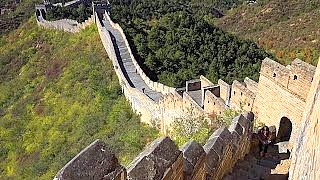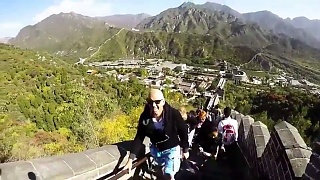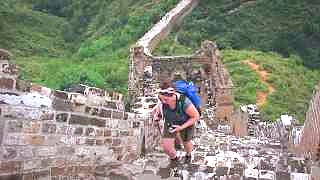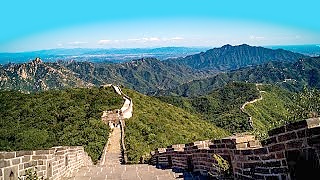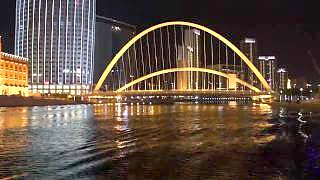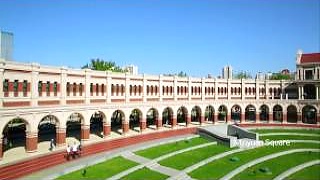East of Beijing, The Great Wall winds its way to the sea ...
[640],shadow=true,start=,stop=The Great Wall of China is one of the most iconic and awe-inspiring attractions in the world, drawing millions of tourists each year. Here's a guide for tourists visiting the Great Wall:
History and Significance:
Historical Significance: The Great Wall of China is a series of fortifications built over centuries to protect China from invasions by nomadic tribes from the north. Its construction began as early as the 7th century BC and continued through different dynasties, with the most famous sections built during the Ming Dynasty (1368�1644 AD).
Length and Structure: Stretching over 13,000 miles (21,196 kilometers), the Great Wall is not a continuous wall but a series of walls, trenches, and natural barriers, including mountains and rivers. Its main purpose was to provide defense and control trade routes along the northern border of China.
Visiting the Great Wall:
Sections to Visit: While the entire Great Wall is massive, certain sections are more accessible and popular among tourists. The most visited sections include Badaling, Mutianyu, Jinshanling, and Simatai. Each section offers unique features and experiences.
Badaling: This section is the closest to Beijing and is one of the most well-preserved and accessible sections of the Great Wall. It can be crowded, especially during peak tourist seasons.
Mutianyu: Located about 1.5 to 2 hours' drive from Beijing, Mutianyu offers a less crowded but equally impressive experience. It features restored sections as well as more rugged and original parts.
Jinshanling and Simatai: These sections are farther from Beijing but are known for their scenic beauty and relatively fewer crowds. They offer a more authentic and adventurous hiking experience.
Tips for Tourists:
Best Time to Visit: The Great Wall can be visited year-round, but the best times are spring (April to June) and autumn (September to November) when the weather is pleasant, and the scenery is beautiful.
Avoiding Crowds: To avoid crowds, consider visiting the Great Wall early in the morning or during weekdays. Badaling tends to be busiest, so opting for less-visited sections like Jinshanling or Simatai can provide a more peaceful experience.
Wear Comfortable Clothing: The Great Wall involves a fair amount of walking and climbing stairs, so wear comfortable shoes and clothing suitable for hiking.
Stay Hydrated and Sun-Protected: Bring plenty of water, sunscreen, and a hat, especially during hot summer months, as there may be limited shade on the Wall.
Respect the Environment: Help preserve the Great Wall for future generations by refraining from littering, defacing, or damaging the structure.
Cultural Insights:
Learn about the History: Take the time to learn about the history and significance of the Great Wall through signage, guidebooks, or guided tours.
Capture Memories: Don't forget to bring a camera or smartphone to capture the breathtaking views and memories of your visit.
Interact with Locals: Engage with local vendors, tour guides, or fellow travelers to gain insights into Chinese culture and customs related to the Great Wall.
Visiting the Great Wall of China is a once-in-a-lifetime experience that offers not only breathtaking views and photo opportunities but also a deeper appreciation for one of the world's most remarkable architectural achievements.
Tianjin, located in northeastern China and just a short train ride from Beijing, is a bustling metropolis with a rich history, vibrant culture, and a unique blend of Chinese and Western influences. Here's a guide for tourists visiting Tianjin:
Historical and Cultural Attractions:
Tianjin Ancient Culture Street (Guwenhua Jie): This pedestrian street is lined with traditional Chinese-style buildings and shops selling arts, crafts, and souvenirs. Visitors can also enjoy street performances, local snacks, and cultural activities.
Tianjin Eye: This iconic Ferris wheel offers panoramic views of the city skyline and Hai River. It's especially stunning at night when the city lights are illuminated.
Italian Style Street (Wudadao): Located in the former British concession area, Wudadao features over 2,000 European-style buildings dating back to the late 19th and early 20th centuries. Visitors can admire the architecture, visit cafes and boutiques, and take guided tours to learn about the area's history.
Porcelain House (China House): This unique attraction is a mansion adorned with millions of porcelain fragments, creating intricate mosaics and sculptures. It's a fascinating example of modern Chinese art and architecture.
Modern Attractions:
Tianjin Binhai Library: Known for its futuristic design, this architectural marvel features a massive spherical auditorium surrounded by bookshelves that appear to float in mid-air. It's a must-visit for architecture enthusiasts and book lovers alike.
Tianjin Haihe Cultural Square: This waterfront promenade along the Hai River is a popular spot for leisurely strolls, boat rides, and cultural events. Visitors can enjoy views of the city's landmarks, including the Tianjin Eye and the Tianjin TV Tower.
Culinary Delights:
Tianjin Cuisine: Sample local specialties such as Goubuli Baozi (steamed buns filled with meat and vegetables), Jianbing (Chinese-style crepes), and Erduoyan Fried Dough Twists (a crispy snack made from twisted dough).
Guifaxiang Mahua: These twisted, fried dough snacks are a beloved Tianjin delicacy. Visitors can watch as vendors prepare them fresh on the spot and enjoy them hot and crispy.
Practical Tips:
Transportation: Tianjin has a well-developed public transportation system, including buses, subways, and taxis. The city is also easily accessible by high-speed train from Beijing and other major cities.
Language: Mandarin Chinese is the official language, but English may not be widely spoken outside of tourist areas. It's helpful to learn a few basic phrases or carry a translation app.
Weather: Tianjin has a temperate climate, with hot, humid summers and cold winters. The best times to visit are in the spring and autumn when the weather is mild and comfortable.
Tianjin offers a fascinating mix of historical charm, modern attractions, and culinary delights, making it a rewarding destination for tourists. Whether you're exploring ancient streets, admiring futuristic architecture, or savoring local flavors, Tianjin has something to offer visitors of all interests.
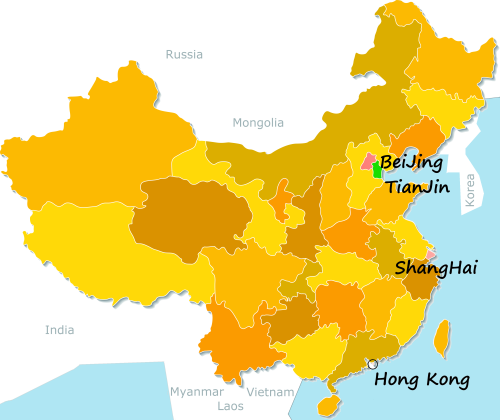
 The Great Wall near TianJin 天津
The Great Wall near TianJin 天津